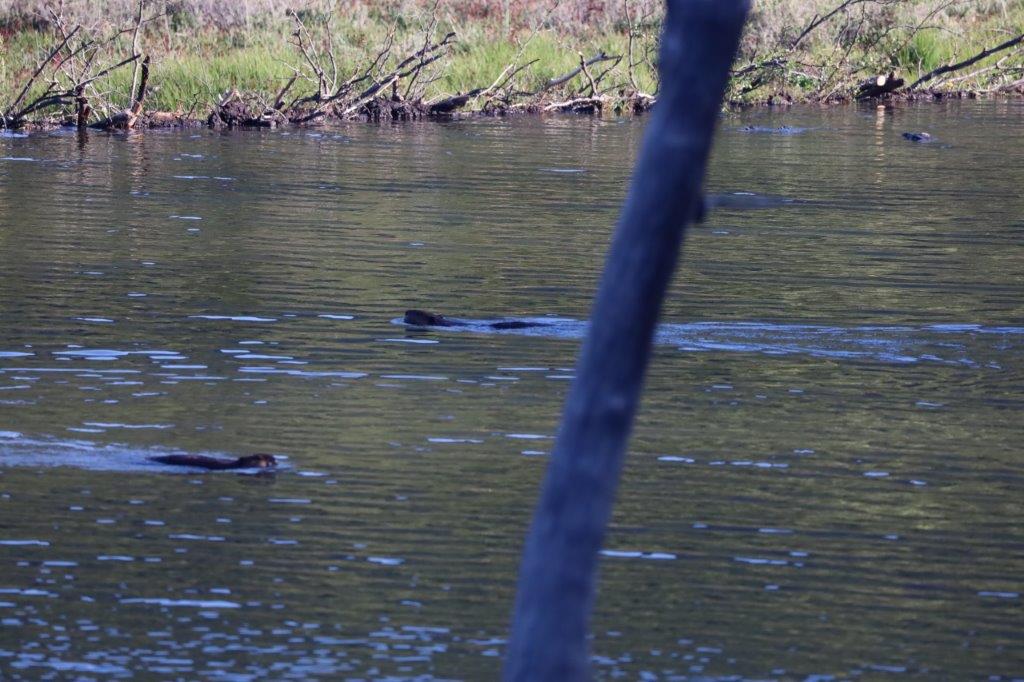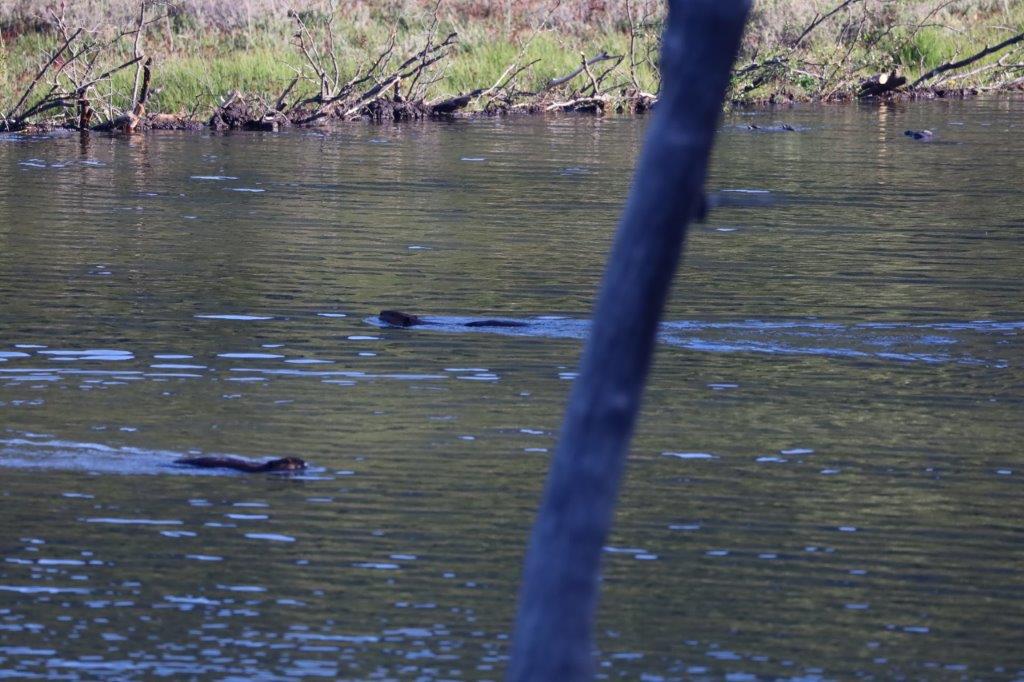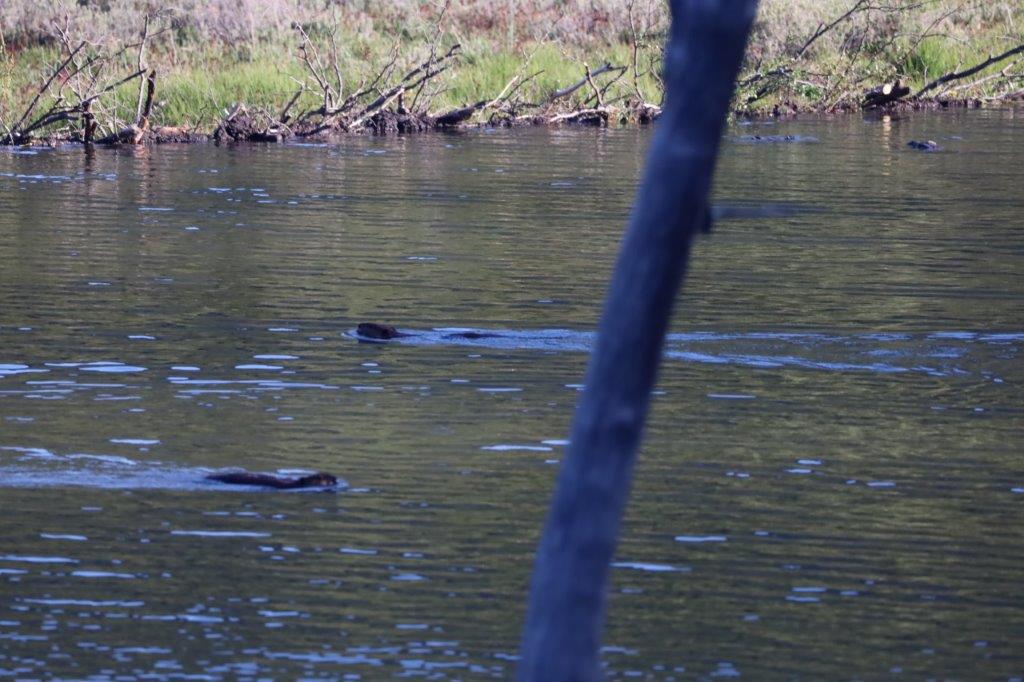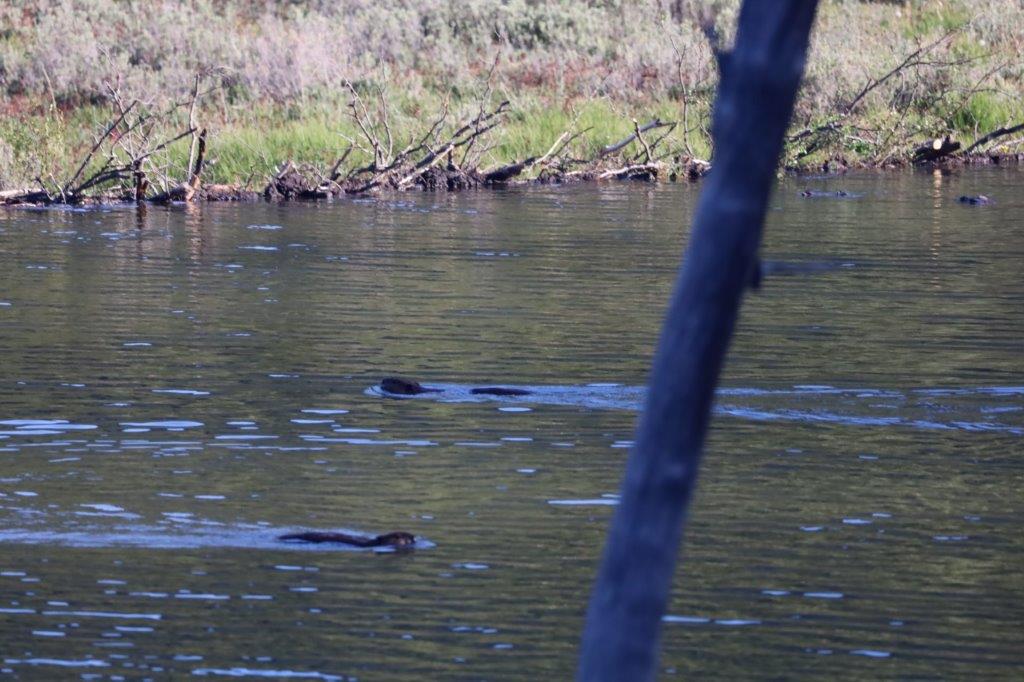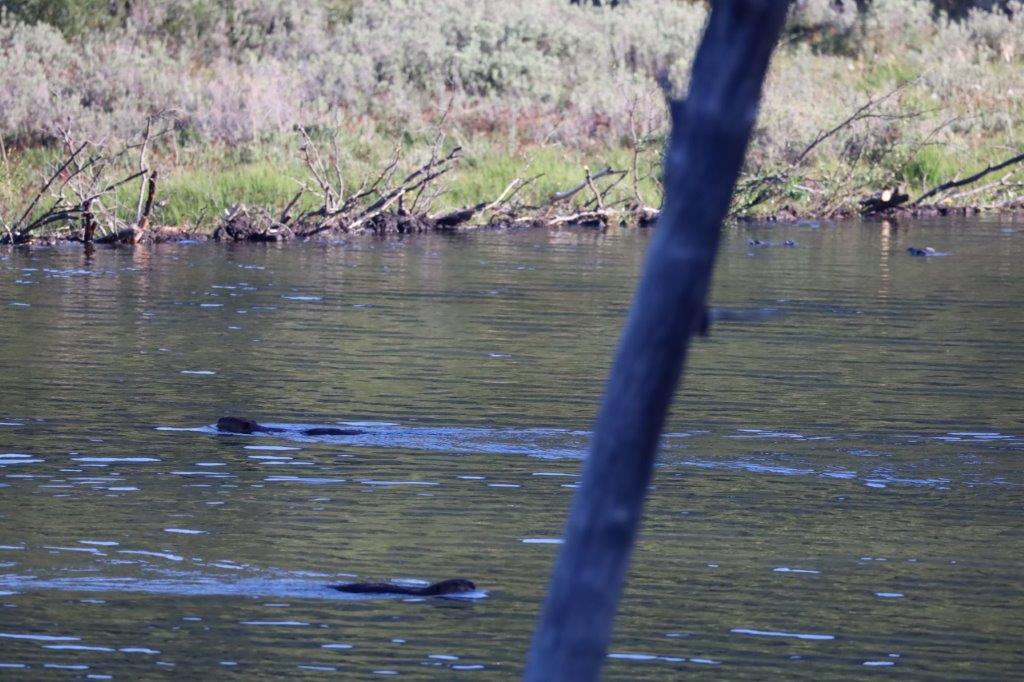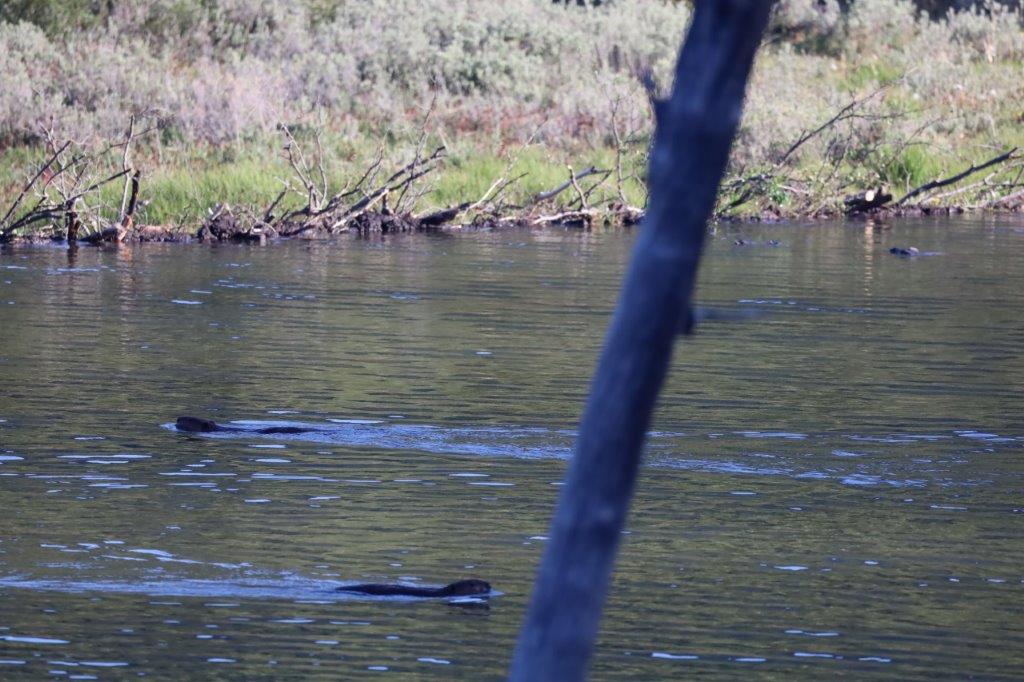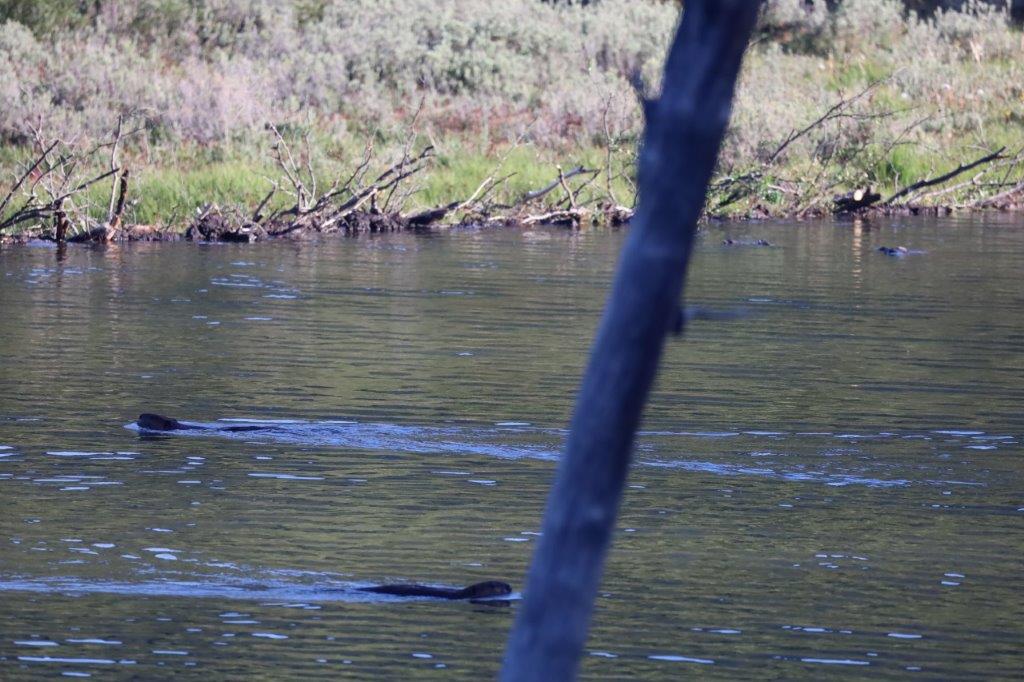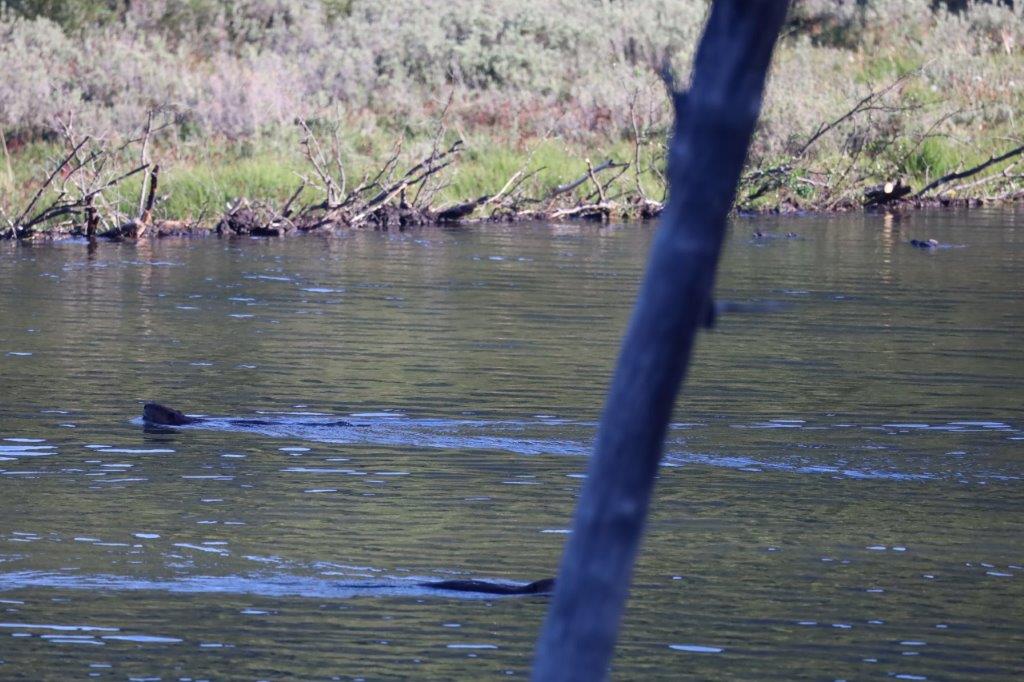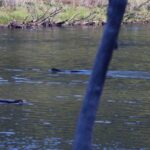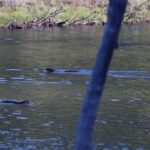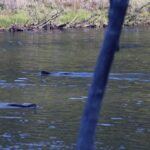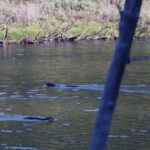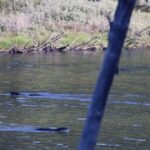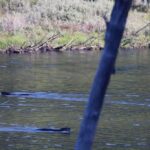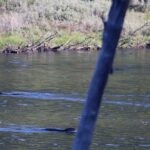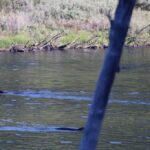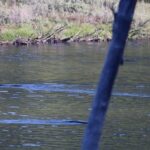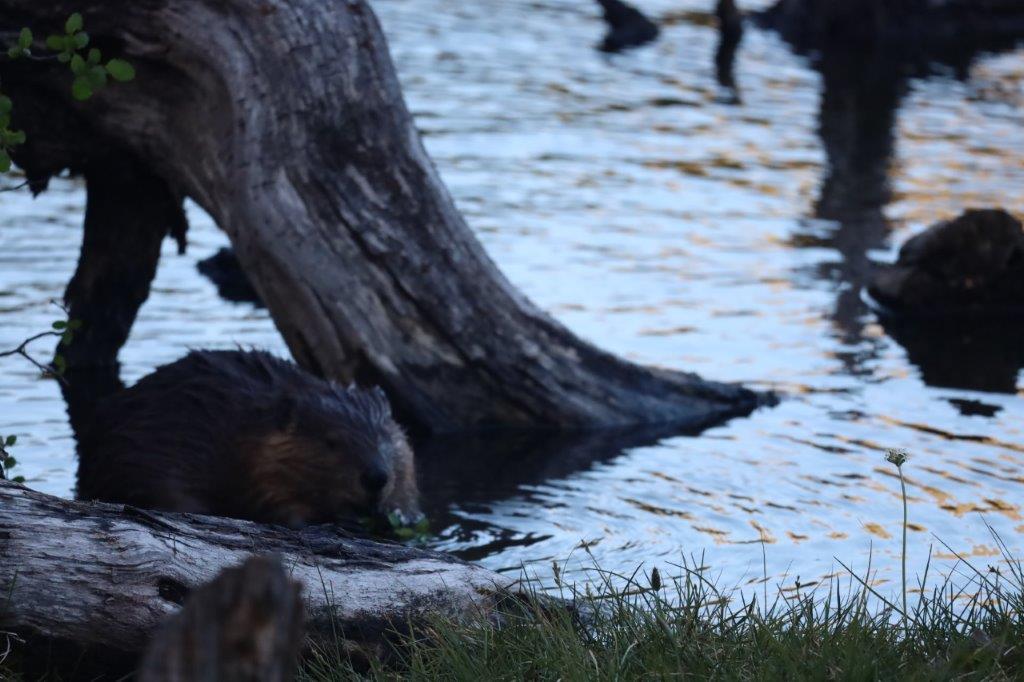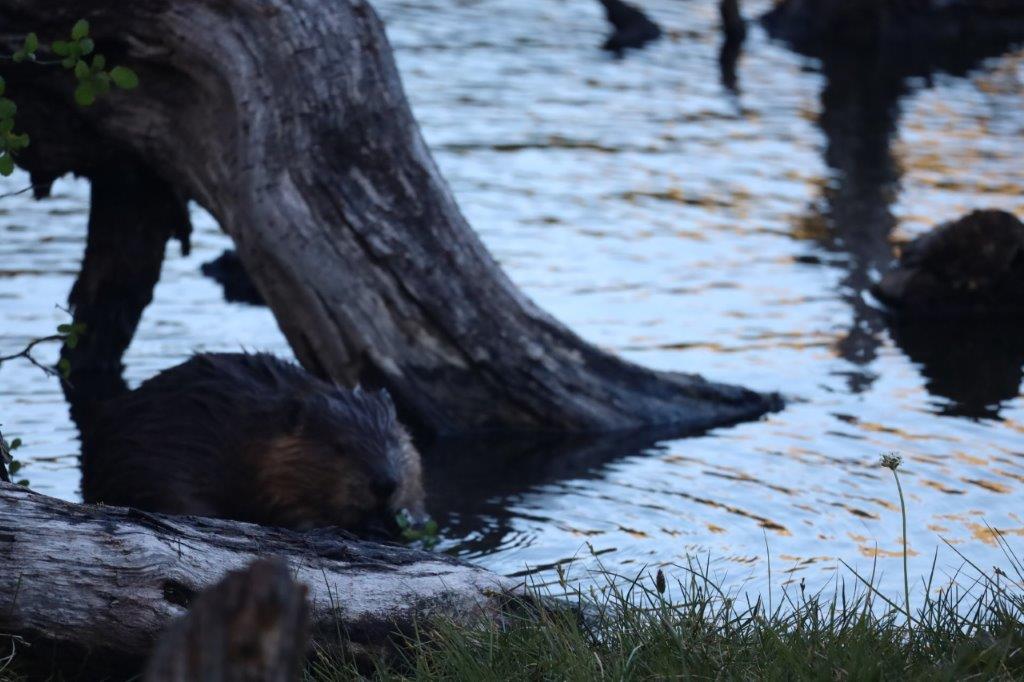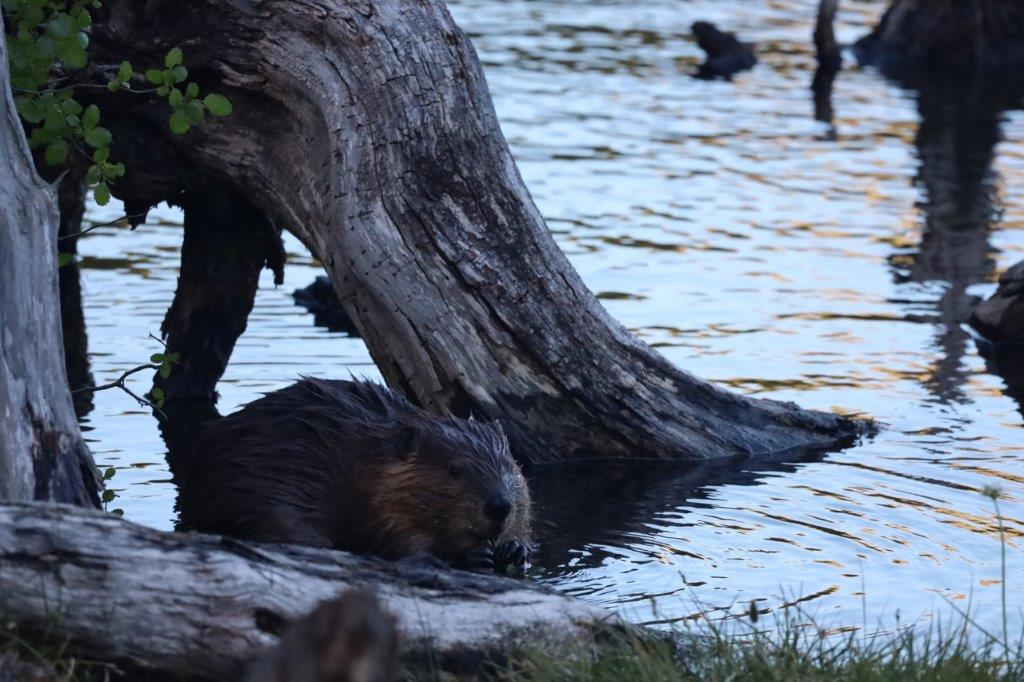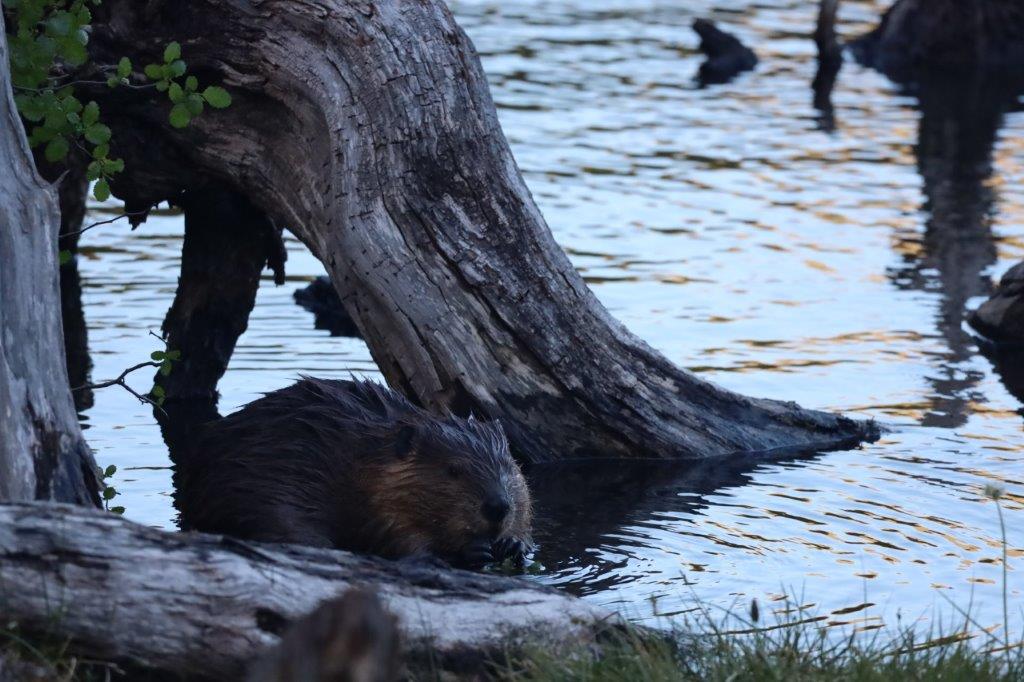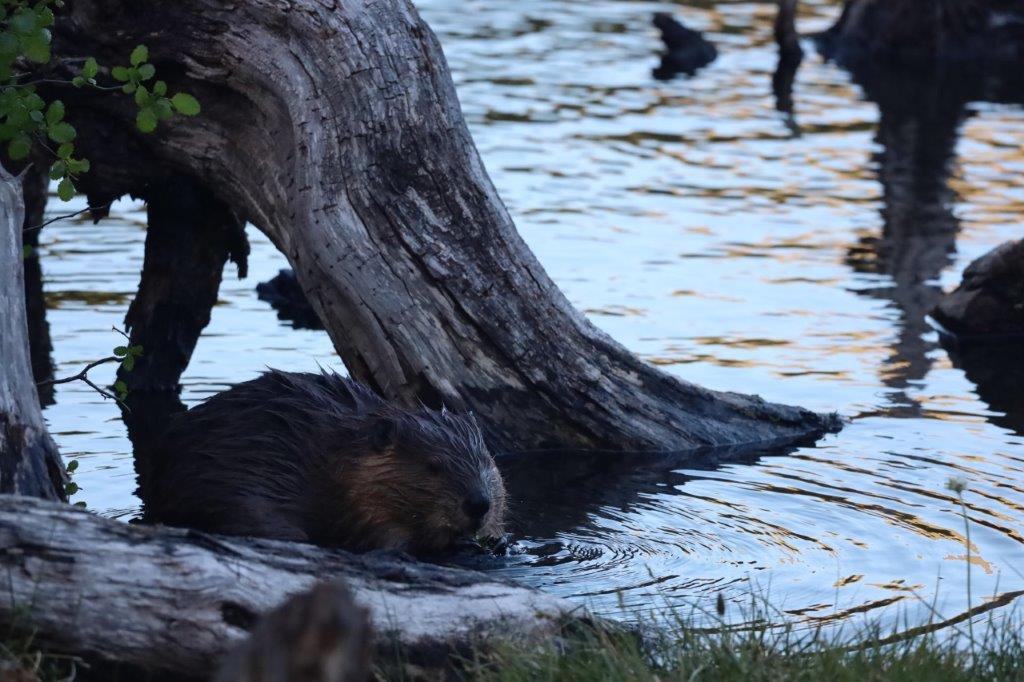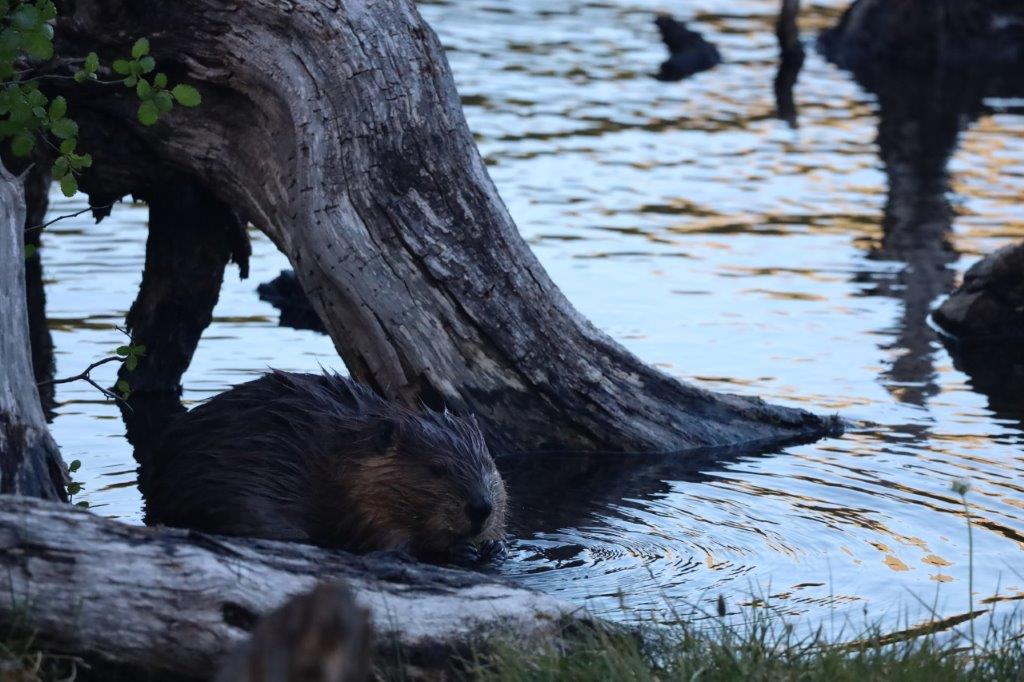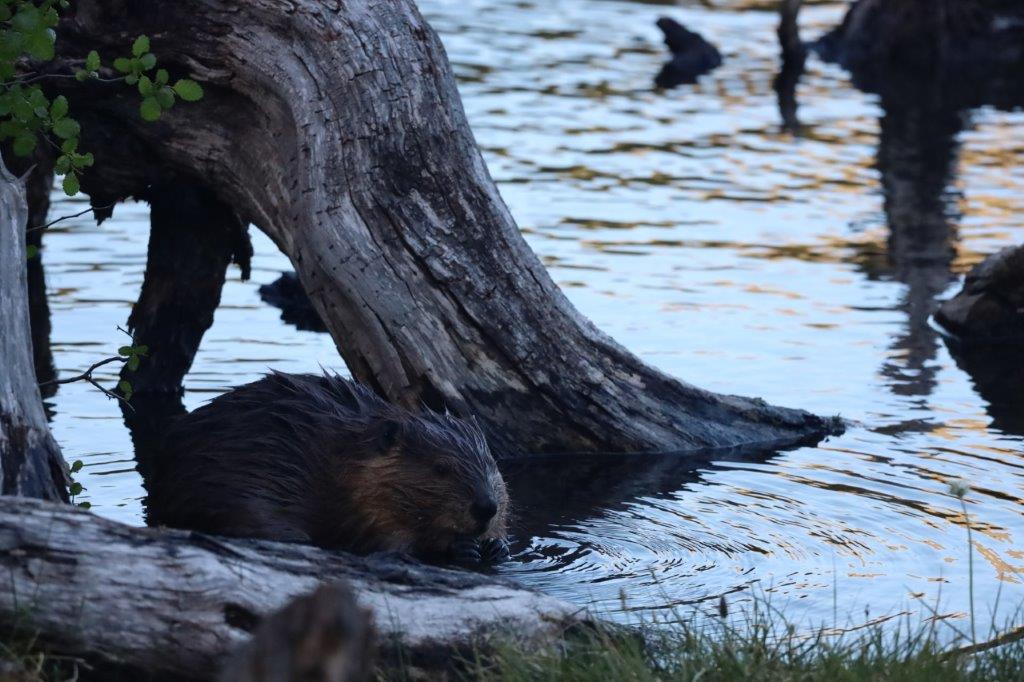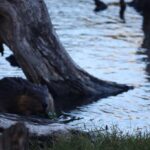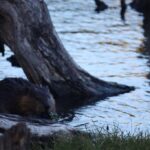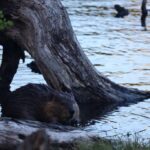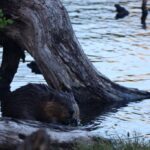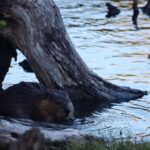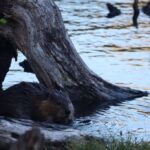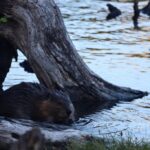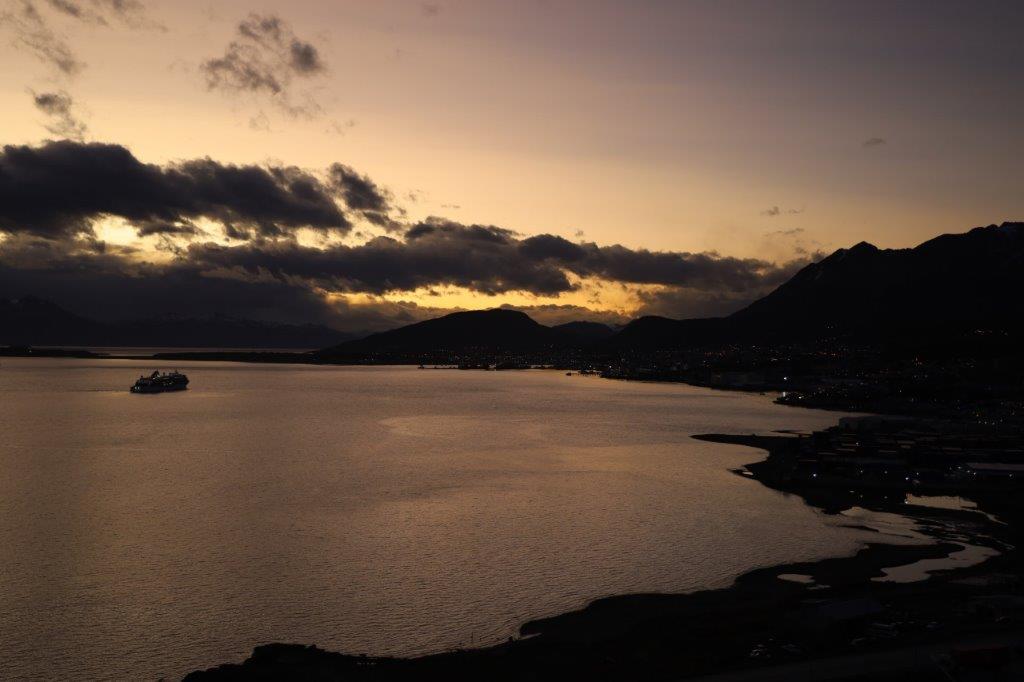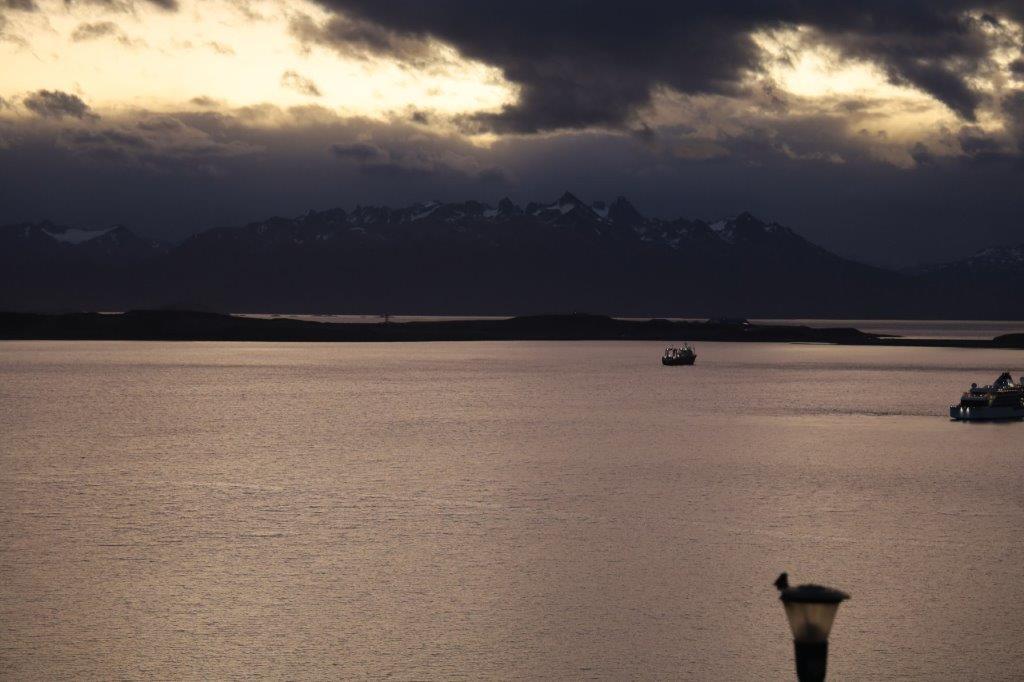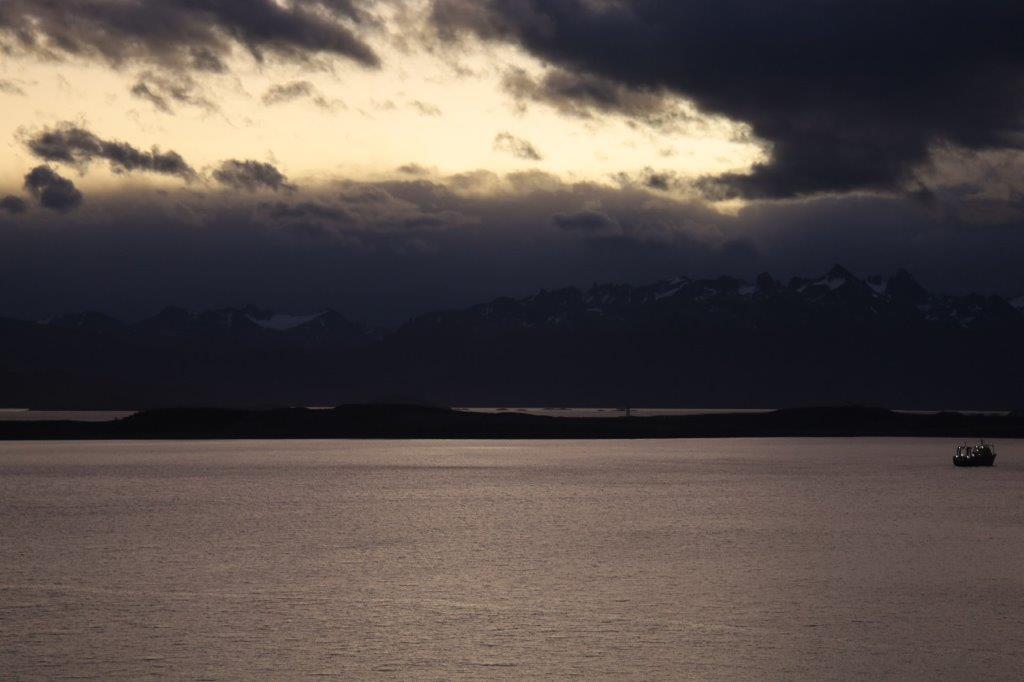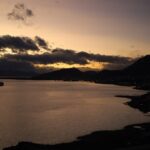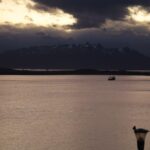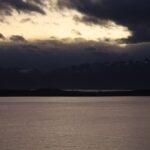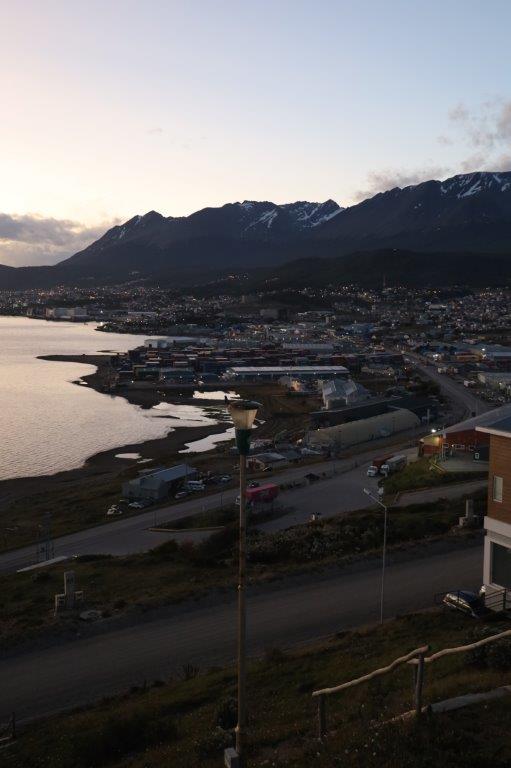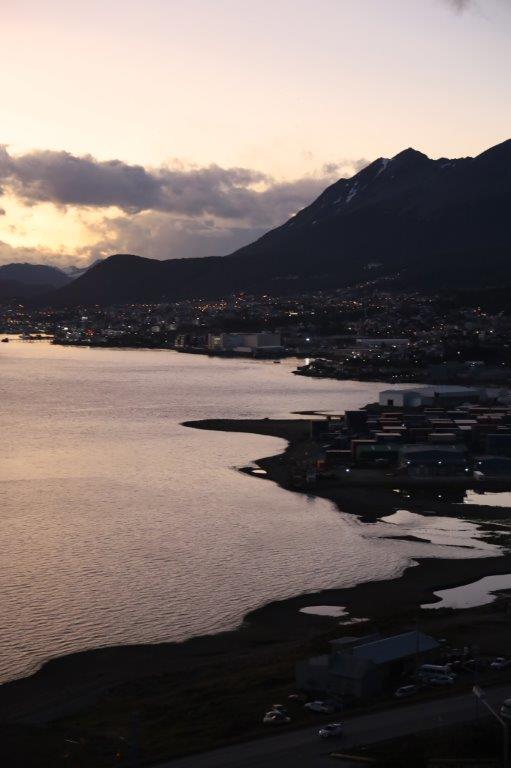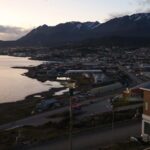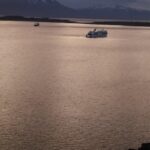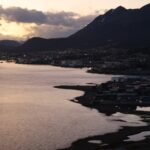43. Argentina: “Floortje at the end of the World”-vibes at the home of a Beaver trapper
In the Netherlands we have this dutch teevee travel program presenter, which is just awesome. Not only has she been showing us the world for many decades. Her name is Floortje Dessing and possibly every Dutch travel lover or couch traveler is jealous of her endeavours, me included, but to be honest. she very much inspired me too to visit the outskirts of our world and NO, my efforts don’t come close to what she did (Northern Canada, South Georgia, West Nepal. etcetera) but I”m trying. One of her best shows was Floortje aan het einde van de wereld, which best translates as “Floortje at the end of the World“. In this show she visits several people (loners, couples, families) which live more or less isolated from most of modern, commercially driven society. Some built their own home from scratch, others live on a boat, others became involved in charitable purposes and started a school for those who fall outside society, others started a care center for threatened wildlife, others live on extremely isolated places like e.g. a russian island near the polar circle or work at an isolated island living in available houses, others live far away from where there is medical assistance and where their children go to school) The people are extremely diverse, but all of them have something in common. They succeeded.
So why do I write about this? Well I never felt closer to the vibe of that teevee show than on this adventure. So buckle up and enjoy the ride…
The Wandelgek drove northeast to the outskirts of Ushuaia from where he had a fabulous view over the town and the Beagle Canal.
Then he drove outside of the town into the surrounding mountains for several kilometers, following a small mountain stream…
… there was a bit of low hanging clouds and mist in those mountains. My estimate was a drive of about 50 minutes to an hour…
…until he arrived at a dirt path which ended at a small wooden forest cabin.
In this cabin lived a couple of which the woman was preparing a fabulous meal, but before The Wandelgek was going to enjoy that, he was putting on a double pair of socks and a pair of high boots, because the man of the house was a real trapper who had built this wooden cabin from skretch to be able to live here largely self sufficient, only going to town once in a while for groceries and gas and fuel…
He would now take The Wandelgek on a forest walk away from the trails and possibly on an encounter with an animal that wasn’t indigenous at all but had become a real local plague: The beaver.
Everything about these two breathed: “Floortje Dessing at the end of the world” and of course it did help that The Wandelgek actually was at the End of the world ????
The Wandrlgek received some large high rubber boots and put tgem over the double pair of socks he had brought in advance. Then, already smell8ng some delicious odours of food coming from a hidden kitchen somewhere, it was timevto start:
The walk
The North American beaver (Castor canadensis) is an invasive species in Tierra del Fuego, at the southern end of Patagonia. Tierra del Fuego is a large island encompassing parts of Chile and Argentina, so that policies and actions to control the species have mainly been binational. The beavers were introduced to the area in 1946 in an effort by the Argentine government to establish a fur trade in the region. Since then, the beavers have spread throughout most of Tierra del Fuego and have also been seen on the Brunswick Peninsula of mainland Chile. When the fur trade failed to establish, the beavers became problematic and the two governments agreed to intervene to eradicate them.
This walk was designed to spot beavers…
…the start of it was following some sort of a wide animal trail and after a short while the white dead tree trunks were all around…
Beaver dams
As well as felling trees, the animals create dams that drown trees and other vegetation. Flooding from beaver dams also damages roads and cattle pastures. Ecologist Christopher Anderson, professor at the Universidad de Magallanes, has said, “The change in the forested portion of this biome is the largest landscape-level alteration in the Holocene – that is, approximately 10,000 years”.
So how do beavers work. Well they start searching for branches and tree stems that they’ll use to block a river. This will create a small lake upstream from the dam. Beneath the dam, underneath the water surface and inside the dam, they create a tunnel leading to a room inside the dam but above water level. This is their home.
On these pictures you’ll see the white dead trees, damaged by the beavers and the lake created by them…
The many tree trunks are building material…
In thiscspecific location, beavers had build three dams and this there were three lakes…
….This made it a bit more tricky to find the beavers…
…where were they?…
… The trapper seemed to know when to expect them, but not where, so after staying at the first lake for a long while, he walked on. The Wandelgek of course followed up to the second lake…
The Wandelgek stayed for a while, extremely quiet, obseving the water, at first thinking every tree trunk head was a beaver, but gradually acknowledging that they didn’t move…
Sun was slowly going down and the trappervsaid it was beaver time…
…He was still convinced he would find some…
…and looking around, The Wandelgek saw massive beaver caused damage to the surrounding forest…
…so he waited patiently…
Beaver traces
Once you get used to the area, you’ll spot more and more of the damage that beavers cause to create their beaverdams…
The impact of the beavers on Tierra del Fuego’s forest landscape has been described as “the largest landscape-level alteration in subantarctic forests since the last ice age.” One factor contributing to their success as invaders is the lack of predators in Tierra del Fuego. Another is the reluctance of local people to hunt beavers, which has led to the beaver population growing almost exponentially. Another factor is that Tierra del Fuego provides exceptional habit for beavers, with much of the area being close to watercourses, and forested with trees and other plants that provide sources of food and shelter.
Fallen or just dead trees (mostly white)…
Beaver damage to the environment of Tierra del Fuego has been extensive, including structural changes in habitat, including the destruction of riparian trees, hydrological changes to rivers via the creation of dams, sediment deposition and increasing retention and accumulation of nutrients and organic matter in rivers and streams. The local habitats have little ability to recover from beaver damage.
Gnarled upon treetrunks…
Apart from causing structural changes to the landscape, an act which causes a cascade of effects along the entire ecosystem by destroying habitat and also facilitating invasions of other exotic plants and animals,] beavers have affected the local human population as their range expanded from the originally remote introduction site. Impacts include the flooding of roads and farmland, as well as the destruction of internet and cell service poles, and livestock fences. It is estimated that these problems cost Argentina alone $66 million a year.
This one shows how the beaver works, gnarling its teeth around the main trunk…
This is work in progress…
This one is ready for transport…
After a while staring at the silent waters, the trapper suddenly pointed at a dark moving spot. And then The Wandelgek had his
First sightings
of beavers…
At first these were still far away and like dark shadows moving through the dark waters and sometimes the sighting was not a beaver at al????:
But after a while of keeping position, being very quiet and occasionally sneeking to a better position, the sightings got better…
What also helped was when a beaver decided to swim into the sun…
In the beginning they were seemingly, aimless swimming and diving around…
… but then they started to get closer to the lake shores…
and visit locations where they had left branches or trunks …
or had to finish felling a tree…
It started to look more coordinated as beavers were swimming on and off from their dam…
The Wandelgek’s patience was rewarded when the beavers got much nearer to the shore where he was posting…
In 1946, the Argentinian government imported fifty beavers from Canada, which were to be released in Cami Lake with the intention of creating a commercial fur trading industry. Though a viable industry ultimately failed to establish, the introduction of beavers into the region has had far-reaching consequences.
North American beavers have no natural predators in the area. In their natural range in North America, bears and wolves prey on the beavers and keep the population under control. One observer noted that anyone considering importing beavers should also import bears, those being the beavers’ natural predators. According to a June 2011 NPR report, 200,000 beavers were living in the area. Another report put the number in excess of 100,000, and stated the level of destruction as akin to having bulldozers thrashing through the area.
Tierra del Fuego National Park in Argentina is especially threatened, as the beavers are destroying long-protected trees. The animals have spread beyond Tierra del Fuego itself into the Brunswick Peninsula of Chile, and the government fears further penetration into continental South America. The beavers already threaten around sixteen million hectares of indigenous forest. Unlike many trees in North America, trees in South America often do not regenerate when coppiced, destroying the forest.
As well as felling trees, the animals create dams that drown trees and other vegetation. Flooding from beaver dams also damages roads and cattle pastures. Ecologist Christopher Anderson, professor at the Universidad de Magallanes, has said, “The change in the forested portion of this biome is the largest landscape-level alteration in the Holocene – that is, approximately 10,000 years”.
A 2017 survey of Tierra del Fuego land managers and researchers showed significant support for eradicating beavers and restoring the landscape. The support for eradication is strongest among managers, while support for restoration is stronger among researchers.
So what are beavers?
Beavers (genus Castor) are large, semiaquatic rodents of the Northern Hemisphere. There are two existing species: the North American beaver (Castor canadensis) and the Eurasian beaver (C. fiber). Beavers are the second-largest living rodents, after capybaras, weighing up to 50 kg (110 lb). They have stout bodies with large heads, long chisel-like incisors, brown or gray fur, hand-like front feet, webbed back feet, and tails that are flat and scaly. The two species differ in skull and tail shape and fur color. Beavers can be found in a number of freshwater habitats, such as rivers, streams, lakes and ponds. They are herbivorous, consuming tree bark, aquatic plants, grasses and sedges.
They have spread to most continents, except Australia Africa and Antarctica, sometines helped by man.
The beavers were now fully operational, transporting branches to the dams they eere either still building or repairing…
After a while it was time to think about the meal that was waiting at the cabin. The trapper decided to take a shorter but slower route straight through beaver territory, not following any trail anymore. This was through bushes, rocky and wet land and the reason for wearing those boots became quite obvious now.
Beaver dam
During this walk the beaver dams themselves were visited…
What was very well visible was the higher water level upstream of each dam and the lower water level downstream of each dam. The 3 lakes were like steps of a stair…
The dams were intricately built constructions of branches and tree trunks supporting eachother…
The water level upstream of a dam was reaching almost to itshighest point ..
The water downstream of a dam was about half a meter to a meter lower…
Then The Wandelgek spotted the cabin where he started his walk and the trapper pounted towards it, meaning the walk was almost at its end and soon he arrived at tge trail towatds the cabin.
Food and beverages at the End of the World
After removing his boots and the double socks, The Wandelgek climbed the wooden stairs to the upper floor, where a large table was prepared for a really superb dinner.
Argentina is famous for its meat dishes and The Wandelgek had been to several restaurants on his journey to try these, but the prepared meat overhere had been simmering in a kettle for more than a dat, very unlike the much quicker preparation in the restaurants where meat was put on a grill or in a frying pan or kettle after ordering from a menu.
When booking this trip, the cook already had asked for everyone to choose between a meat or a fish dish and after that preparations started. This was a day earlier. The result was meat so tender, succulent, juicy and moist that it melted on your tongue. This combined with al dente vegetables and a jacket potatoe meant that this was the best dinner during this whole journey. It was really enjoyable in combination with an Argentine Malbec wine and at the closure of the tour the host surprised me with a shot of Fernet, a…. drink, really popular in Argentina.
 Then it was farewell and The Wandelgek started his journey back to Ushuaia to spend the night.
Then it was farewell and The Wandelgek started his journey back to Ushuaia to spend the night.
The driver paused at the viewpoint where he had paused earlier that evening and now (just a bit after sundown) the view was even more gorgeous …
Ushuaia sprawled beneath his feetand slowly the street lights, interior lights and harbour and ship lights were turned on…
The sky turned a bit yellow…
This was probably the last view like this so The Wandelgek, who was leaving Tierra del Fuego and Patagonia the next afternoon, was taking his time to really enjoy the view over Ushuaia as well as over the beautiful Beagle Canal, mirroring the yellow sky…
Then the driver brought him to his hotel. Pffff, what a day this had been!!!






































